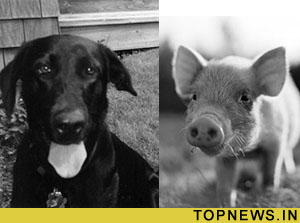Evidence of early agriculture found in dog and pig bones from China
 Washington, March 24: Researchers have gathered evidence of early human experiments with agriculture in dog and pig bones, as well as bones of other animals, from an archaeological site in a region of northwest China.
Washington, March 24: Researchers have gathered evidence of early human experiments with agriculture in dog and pig bones, as well as bones of other animals, from an archaeological site in a region of northwest China.
The bones come from a Neolithic site known as Dadiwan, in China’s western Loess Plateau, excavated first by a Chinese team in the late 70s and early 80s, and in 2006 by a team from the University of California, Davis, and Lanzhou University in China.
Chemical traces within the dog bones suggest a diet high in millet, a grain that wild dogs are unlikely to eat in large quantities, but that was a staple of early agricultural societies in northwest China.
“If the dogs were consuming that much millet, their human masters were likely doing the same,” said Seth Newsome, a coauthor on the study.
Humans occupied the site during two main phases, from 7,900 to 7,200 years ago (Phase 1) and from 6,500 to 4,900 years (Phase 2).
Though some fossil remains of millet plants have been found in both of these deposits, the fossils don’t directly reveal how much millet contributed to the local diet.
To address this question, the researchers turned to a technique known as stable isotope analysis.
Atoms of elements such as carbon come in different forms (isotopes), which are chemically similar, but can be distinguished in the laboratory by minute differences in their mass.
Certain kinds of plants, known as C4 plants, tend to concentrate heavier carbon isotopes as they grow, compared to other plants known as C3 plants.
Animals with diets high in C4 plants also tend to concentrate heavier isotopes in their bones.
As it turns out, millet is one of the few C4 plants that grow in arid northwest China, making the carbon isotopes in bone a good indicator of a millet-rich diet.
The researchers found that the most of the dog bones from the Phase 1 deposits bore the isotopic signature of a high millet diet.
This suggests that these dogs were domesticated and fed by humans who harvested millet.
Bones of pigs from the site tell a slightly different story. In the Phase 1 deposits, the pig bones don’t show signs of millet in the diet, so they were probably wild pigs hunted and eaten by people.
But, pig bones from Phase 2 do have the isotopic signature of millet, so they were probably domesticated by this time.
“Our results help fill in the picture of how agriculture arose in this part of the world,” said Newsome. (ANI)